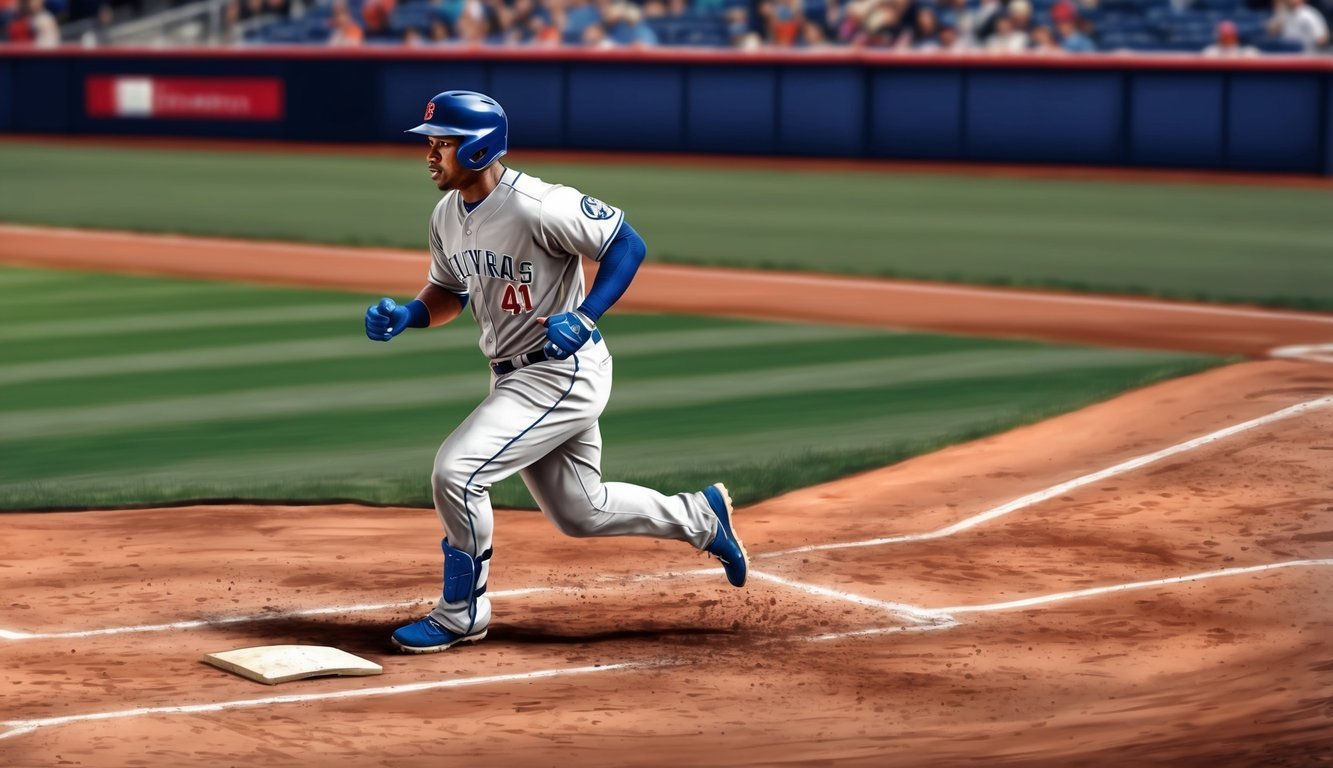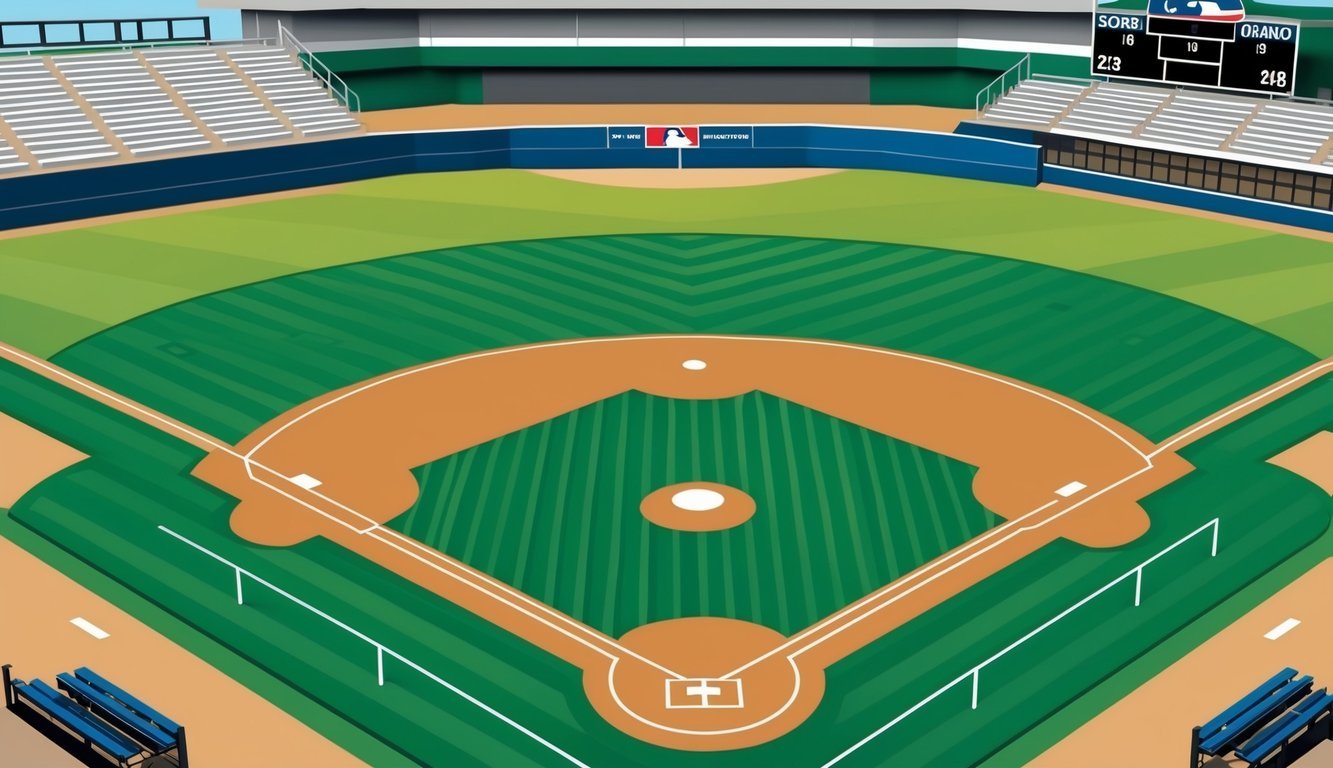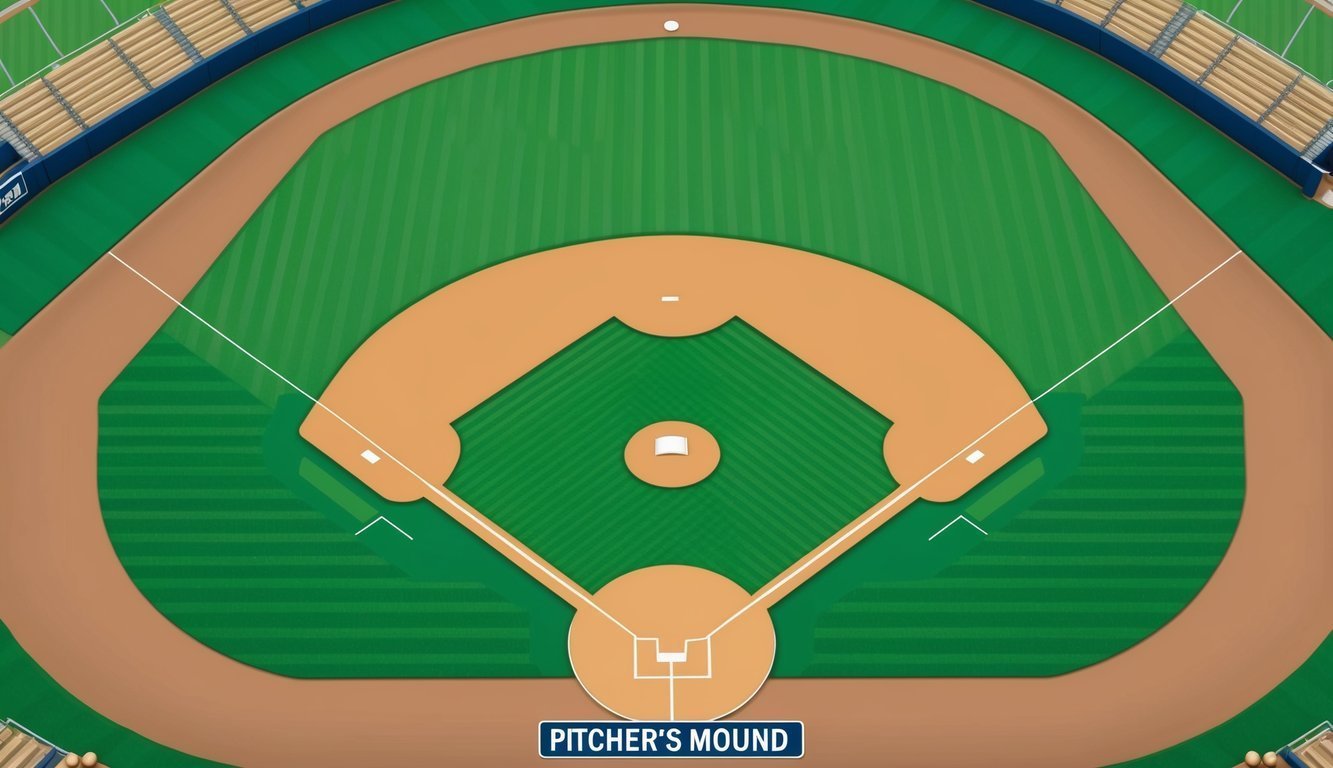Baseball has a language all its own, filled with colorful terms that can baffle newcomers.
From the crack of the bat to the roar of the crowd, America’s pastime is steeped in unique jargon that adds flavor to the game.
Understanding baseball terms enhances the fan experience, allowing spectators to fully appreciate the intricacies of each play.
The baseball diamond is a stage where players wield their bats, toss balls, and race between bases.
Each position and action has its own special name.
A pitcher might throw a yakker (curveball) to strike out a batter, while a utility player stands ready to fill multiple roles on the field.
Even the equipment has its own lingo – the bat isn’t just a bat, it’s a lumber or a stick.
Learning these terms opens up a whole new world for baseball enthusiasts.
It’s not just about knowing what an ace or a fireman does on the field.
It’s about connecting with the rich history and culture of the sport.
Whether you’re a rookie fan or a seasoned spectator, mastering baseball’s unique vocabulary can deepen your love for the game.
Basics of the Game
Baseball is a sport rich in tradition and strategy.
The fundamental elements of the game include scoring runs, defensive plays, and specialized player roles.
Objectives and Scoring
The primary goal in baseball is to score more runs than the opposing team.
A run is scored when a player successfully touches all four bases in order.
The most exciting way to score is with a home run, where the batter hits the ball out of the field, allowing them to circle all bases in one play.
Teams take turns batting and fielding.
The batting team tries to hit the ball and advance runners around the bases.
The fielding team aims to prevent runs by catching hit balls or throwing out runners before they reach a base.
Games typically last nine innings, with each team getting a chance to bat in each inning.
If the score is tied after nine innings, extra innings are played until a winner is determined.
Players and Positions
A baseball team consists of nine players on the field.
These positions are divided into infielders and outfielders, each with specific roles:
Infielders:
- Pitcher: Throws the ball to the batter
- Catcher: Receives pitches behind home plate
- First baseman, second baseman, shortstop, third baseman: Defend the infield
Outfielders:
- Left fielder, center fielder, right fielder: Cover the outfield grass
Each position requires unique skills.
Infielders need quick reflexes and strong throwing arms, while outfielders must be able to cover large areas and make accurate long-distance throws.
Equipment Essentials
Baseball players rely on specialized gear to play the game:
-
Ball: A sphere with a cork center, wrapped in yarn and covered in leather
-
Bat: Usually made of wood for professional players, aluminum for amateur leagues
-
Glove: Leather mitt designed for catching and fielding
-
Protective gear:
- Helmet for batters
- Mask, chest protector, and shin guards for catchers
-
Bases: White canvas bags marking the corners of the infield
-
Uniform: Includes a cap, jersey, pants, and cleats
This equipment not only allows players to perform their roles effectively but also ensures their safety on the field.
Each piece of gear has evolved over time to enhance performance and protect players from potential injuries.
Pitching and Catching
The dynamic duo of pitcher and catcher forms the backbone of baseball’s defense.
These players work in tandem to outsmart batters and control the game’s tempo.
Pitch Types
Pitchers have an arsenal of throws to keep batters guessing.
The fastball, thrown at high speed, is the most common.
Curveballs break sharply downward, while sliders have a lateral movement.
Changeups deceive with slower speed but similar arm motion to fastballs.
Some pitchers master the knuckleball, a challenging pitch with unpredictable movement.
Each pitch type serves a specific purpose in a pitcher’s strategy.
Pitchers mix these throws to keep batters off-balance.
They might start with a blazing fastball, then follow up with a slower changeup to disrupt timing.
The Pitcher’s Role
Pitchers aim to throw strikes and prevent runs.
They stand on the mound, 60 feet 6 inches from home plate.
Their job is to outsmart batters and induce weak contact or strikeouts.
Good pitchers read batters’ weaknesses and adjust their approach.
They work with catchers to select the right pitches for each situation.
Control and accuracy are crucial skills.
Pitchers also field their position, ready to catch line drives or cover first base on ground balls.
They’re part of a team’s run prevention strategy.
Catcher’s Duties
Catchers are the field generals of baseball.
They crouch behind home plate, calling pitches and framing them for umpires.
Their protective gear allows them to block wild pitches and foul tips.
A catcher’s main job is to work with pitchers.
They suggest pitch types and locations based on the batter and game situation.
Catchers also try to throw out runners attempting to steal bases.
Defensively, catchers are responsible for fielding pop-ups near home plate.
They communicate with infielders on bunt plays.
A good catcher can significantly improve a pitching staff’s performance.
Batting and Baserunning

Batting and baserunning form the core offensive strategies in baseball.
These skills require a mix of technique, strategy, and split-second decision-making to outsmart the defense and score runs.
Batting Techniques
Batters employ various techniques to make solid contact with the ball.
The stance is crucial, with feet shoulder-width apart and knees slightly bent.
Grip is another key factor – most players use the “knocking knuckles” alignment for optimal bat control.
Bunting is a strategic technique used to advance runners or catch the defense off-guard.
To bunt, the batter holds the bat out in front of home plate, aiming to tap the ball softly into play.
For power hitting, batters focus on hip rotation and weight transfer.
The goal is to drive the ball deep into the outfield or over the fence for a home run.
Contact hitters aim for singles and doubles, emphasizing bat control to place the ball in gaps between fielders.
Understanding the Count
The count represents the number of balls and strikes in an at-bat.
It’s a crucial element that influences both the batter’s and pitcher’s strategies.
A favorable count for the batter (like 3-1 or 2-0) often results in a “hitter’s pitch” – a more hittable ball.
In these situations, batters might look to swing for power.
When the count favors the pitcher (0-2 or 1-2), batters become more defensive.
They might choke up on the bat or look to foul off tough pitches to stay alive.
A full count (3-2) creates tension, as the next pitch could result in a walk or a strikeout.
Batters often need to protect the plate in this situation.
The Art of Baserunning
Effective baserunning can turn a single into a double or manufacture a run from a walk.
Speed is an asset, but good instincts and reading the game are equally important.
Stealing bases is a key baserunning skill.
Runners study pitchers’ movements to get a good jump.
The lead-off – the distance taken from the base before the pitch – is crucial for successful steals.
Tagging up on fly balls allows runners to advance after the catch.
It’s a risk-reward decision based on the depth of the fly ball and the outfielder’s arm strength.
Reading the ball off the bat is vital.
On line drives, runners must freeze to avoid being doubled off.
For ground balls, they need to react quickly to avoid force-outs.
Fielding and Defending

Fielding and defending are crucial aspects of baseball that require skill, strategy, and teamwork.
Players must master various techniques to catch, throw, and make plays to prevent the opposing team from scoring.
Infield Strategy
Infielders play a vital role in defending against ground balls and short hits.
The first baseman, second baseman, shortstop, and third baseman work together to cover their assigned areas.
They must be ready to field grounders, catch line drives, and turn double plays.
Positioning is key for infielders.
They adjust their stance based on the batter and game situation.
For instance, they might play closer to the bag with a speedy runner on base.
Infielders need quick reflexes to react to hard-hit balls.
They practice scooping up grounders smoothly and making accurate throws to get runners out.
Outfield Dynamics
Outfielders cover large areas of the field, catching fly balls and preventing extra-base hits.
The left fielder, center fielder, and right fielder each have specific zones to patrol.
Communication is essential among outfielders to avoid collisions when chasing fly balls.
They use hand signals and verbal calls to coordinate their movements.
Outfielders must judge the trajectory of fly balls and take efficient routes to make catches.
They also need strong throwing arms to get the ball back to the infield quickly.
Backing up plays is a critical part of outfield strategy.
When a ball is hit to one outfielder, the others move to support in case of an error or overthrow.
Making Plays
Fielders aim to convert batted balls into outs through various defensive plays.
A routine ground ball might result in a simple throw to first base for an out.
Double plays are exciting defensive maneuvers.
Infielders work together to get two outs on a single play, often starting with a grounder to shortstop or second base.
Catching fly balls requires good hand-eye coordination and concentration.
Outfielders and infielders alike must secure the ball in their gloves to record the out.
Fielders strive to minimize errors, which allow runners to advance or reach base safely.
Proper technique and focus help prevent costly mistakes during crucial moments of the game.
Rules and Regulations

Baseball has a complex set of rules and regulations that govern gameplay.
These guidelines ensure fair play and maintain the integrity of the sport.
Umpires and Their Calls
Umpires play a crucial role in enforcing baseball rules.
They make important calls during the game, including strikes, balls, and outs.
When a pitch crosses the strike zone without being hit, the umpire calls a strike.
If it misses the zone, it’s a ball.
Three strikes result in a strikeout, while four balls lead to a walk.
Umpires also determine if batted balls are fair or foul.
Fair balls are playable, while foul balls count as strikes (unless it’s already a two-strike count).
They make close calls on bases, deciding if runners are safe or out.
In professional games, there are typically four umpires on the field.
The home plate umpire calls balls and strikes, while the others cover the bases and outfield.
Common Penalties
Baseball has several penalties for rule violations.
One common infraction is a balk, where a pitcher makes an illegal motion.
This results in all baserunners advancing one base.
If a batter interferes with a fielder trying to make a play, they can be called out.
Similarly, if a baserunner interferes with a fielder, they may be called out.
Pitchers can receive warnings or ejections for intentionally throwing at batters.
Managers and players can be ejected for arguing with umpires or unsportsmanlike conduct.
Game Progression
A regulation baseball game consists of nine innings.
Each team bats once per inning.
The visiting team bats first, and the home team bats second in each inning.
An inning ends when the defensive team records three outs.
Outs can occur through strikeouts, caught fly balls, or force plays at bases.
Additionally, each team alternates between batting and fielding, with the batting team attempting to score runs while the defensive team tries to prevent them.
The most common way to record an out is through a strikeout, where the batter fails to hit the ball after three pitches, leading to the question: what is the strikeout symbol? This symbol is typically portrayed as a “K” in scorekeeping, serving as a quick reference for how many times a batter has been struck out during the game.
If the game is tied after nine innings, extra innings are played until a winner is determined.
In some leagues, special rules apply in extra innings to speed up play.
A game becomes official after five innings (or 4.5 if the home team is leading).
Games can be called early due to weather, with the score reverting to the last completed inning.
